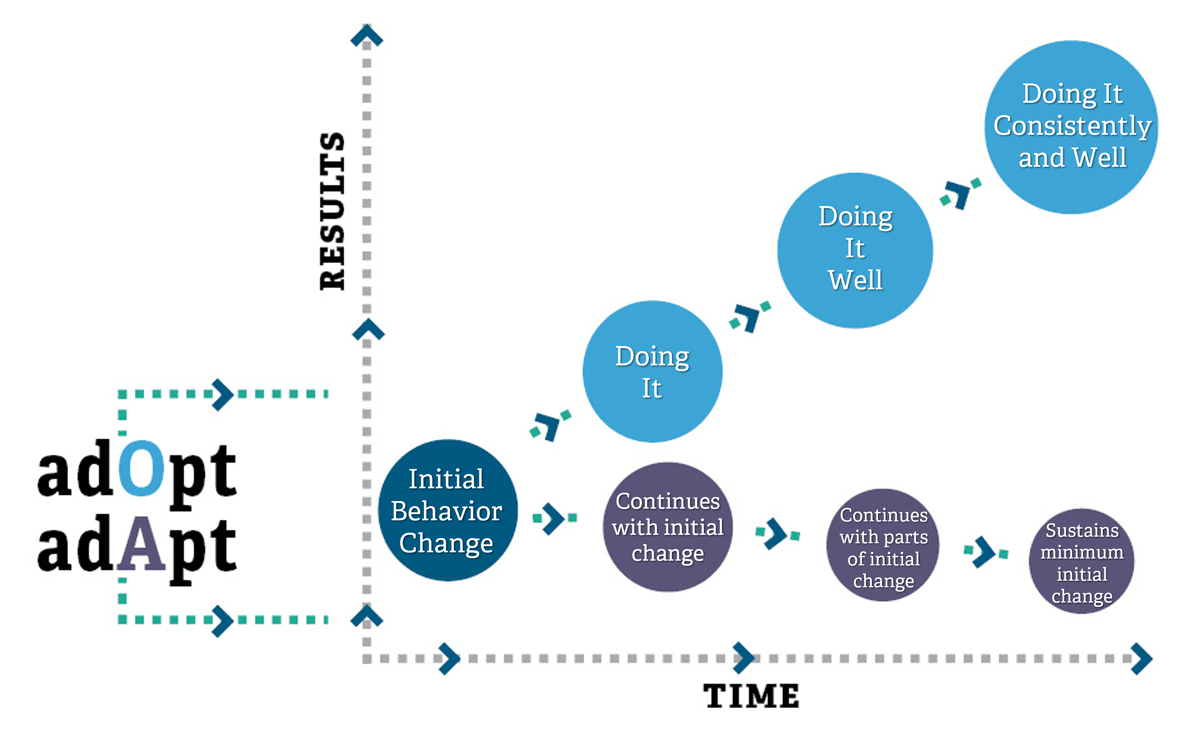You lean back in your chair and smile… your game plan looks brilliant. Your investment in the new sales tool/process/program is “fool proof”:
- Launch at Sales Kickoff with a big splash
- Speech from Head of Sales about the WIIFM (for our salespeople and our customers)
- Expectations are set
- Reports are created
- Training is ready
- Incentives/prizes are in place for early adopters
You have all the right ingredients for a successful deployment… or do you?
You wonder, “Why aren’t all sales organizations getting this right? Why do I still hear stories of program failures and the need for re-starts? Could I be missing something?”
THE SECRET
Sales organizations continue to invest heavily, as they should, in more and better tools, processes and training programs designed to increase salespeople’s productivity. Yet most salespeople tend to only use, apply or put into practice a fraction of what’s made available. After much effort is exerted by management, in the end there is little real change in what the salespeople do or how they do it. The promised or hoped for performance lift becomes elusive. What is guaranteed is traditional management tactics and they aren’t the answer to changing this phenomenon. Getting full integration of a sales process or tool into daily, weekly or monthly sales activities requires something more than management.
What differentiates the level of sales tool, process or program adoption is not what happens initially. Most sales leaders communicate why the tool, process or program was of value, set execution expectations and began inspecting for evidence of adoption. This is where the difference between what drives “adoption” and how acceptance of “adaption” begins.

“Adaption” is the result of management being blind to the unintentional consequences of the expectations they set, what they inspect and what they hold people accountable to do.Here are three common missteps:
- Launch expectation misstep: Setting the expectation that the tool, process or program must be immediately put into full execution, done consistently and well at all times, has your salespeople disenfranchised before they’ve even begun. They know the expectation is unrealistic which creates an excuse to not move forward.
- Inspection misstep: Inspecting for evidence of behavior change that’s in alignment with the behavior is critical. However, accepting an initial behavior change as the indicator of full behavior change or assuming any minor change you see ensures a commitment to additional change is a mistake. When salespeople receive positive feedback for a small behavior change, that behavior has become the new performance bar.
- Motivation misstep: Inspiring salespeople to make significant changes in how they do their work takes more than a big kickoff or simply repeating why the change is good for the company or customer. Many people are willing to make a small change based on a management plea or directive. It’s the bigger change that they resist. Without ongoing individualized encouragement or support, adoption has only “hope” as its strategy.
Transformational leaders understand that full adoption is a multi-stage journey; a journey that requires driving engagement, enablement and execution at each stage.

Each stage must be led and coached independently. The key to adoption is a sales leader driving the following three adoption fundamentals at EACH stage:
- Enablement: Describing the specific behavior to be done, clarifying how it is different than the previous stage’s behavior creates the necessary readiness and focus
- Engagement: Answering “why” the behavior is of value to the salesperson creates the necessary willingness
- Execution: Tackling the challenges encountered as the salesperson attempts to do the expected behavior creates the necessary accountability and support.
The SECRET TO ADOPTION requires that sales leaders recognize the journey, stay intimately involved on the journey and not assume initial adaption will turn into full adoption. Adoption requires leadership which inspires an individual to do a new behavior, management which clarifies the behavior to be done and coaching which addresses the salesperson’s execution challenges.
Everyone knows hope is not a strategy. Make sure you haven’t accidentally chosen or are relying upon hope to gain adoption of your new tools and programs. If you want to learn more about how to tackle adoption, watch our recent webcast or contact us at info@businessefficacy.com.
